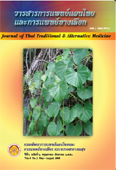The Angels of St. Wolfgang: Representation of Infancy and Childhood in the Art of the Renaisance and of the Baroque
Main Article Content
Abstract
This paper was translated and edited from the chapter 18 article entitled “Art as Therapy” by Edith Kramer. She brilliantly used the renowned art architecture of the world-famous double altars in the pilgrimage church of St. Wolfgang in Austria (i.e., the first one that combines high Gothic and Renaissance elements created by the great Tirolean woodcarver and painter Michael Pacher in 1641-1651, and another remarkable altar created by the Bavarian Baroque sculptor Thomas Schwanthaler in 1676, flanking Pacher’s on the left) to represent psychoanalytically the action’s emotional significance through an extensive vocabulary of gestures and facial expression, perfected by the illusions embodied in the winged angels, as emotional truth.
Article Details
Section
Special Article
References
N/A


